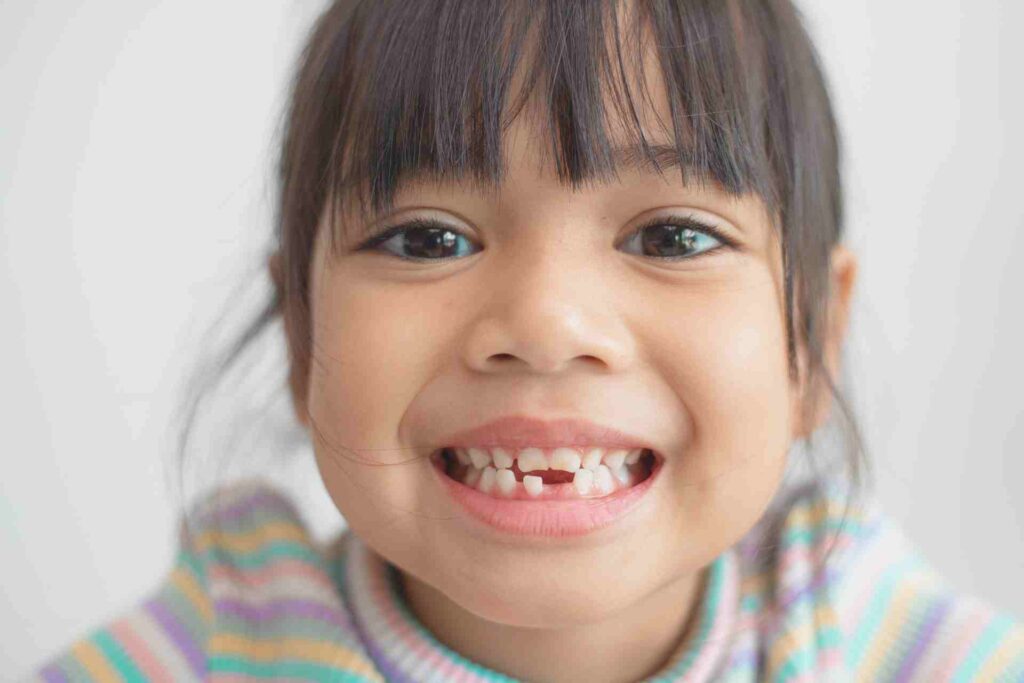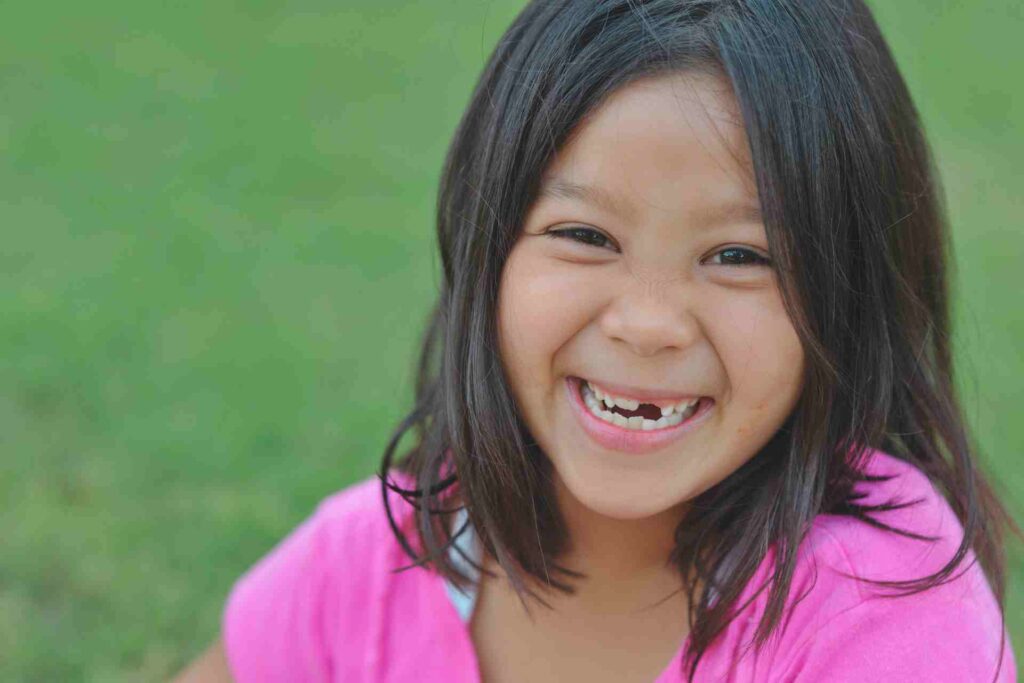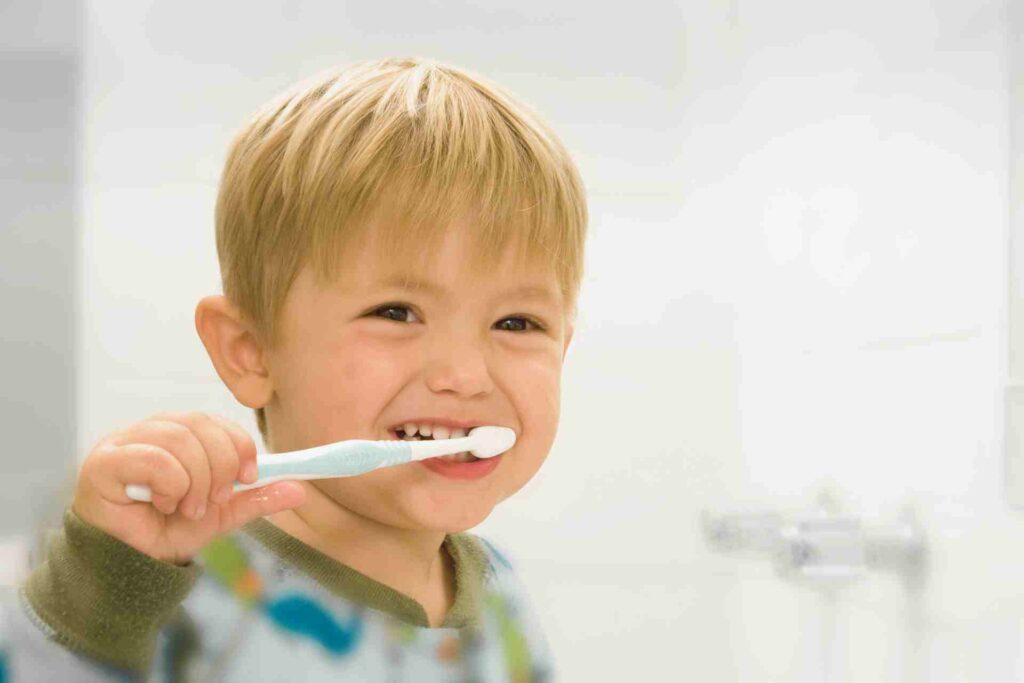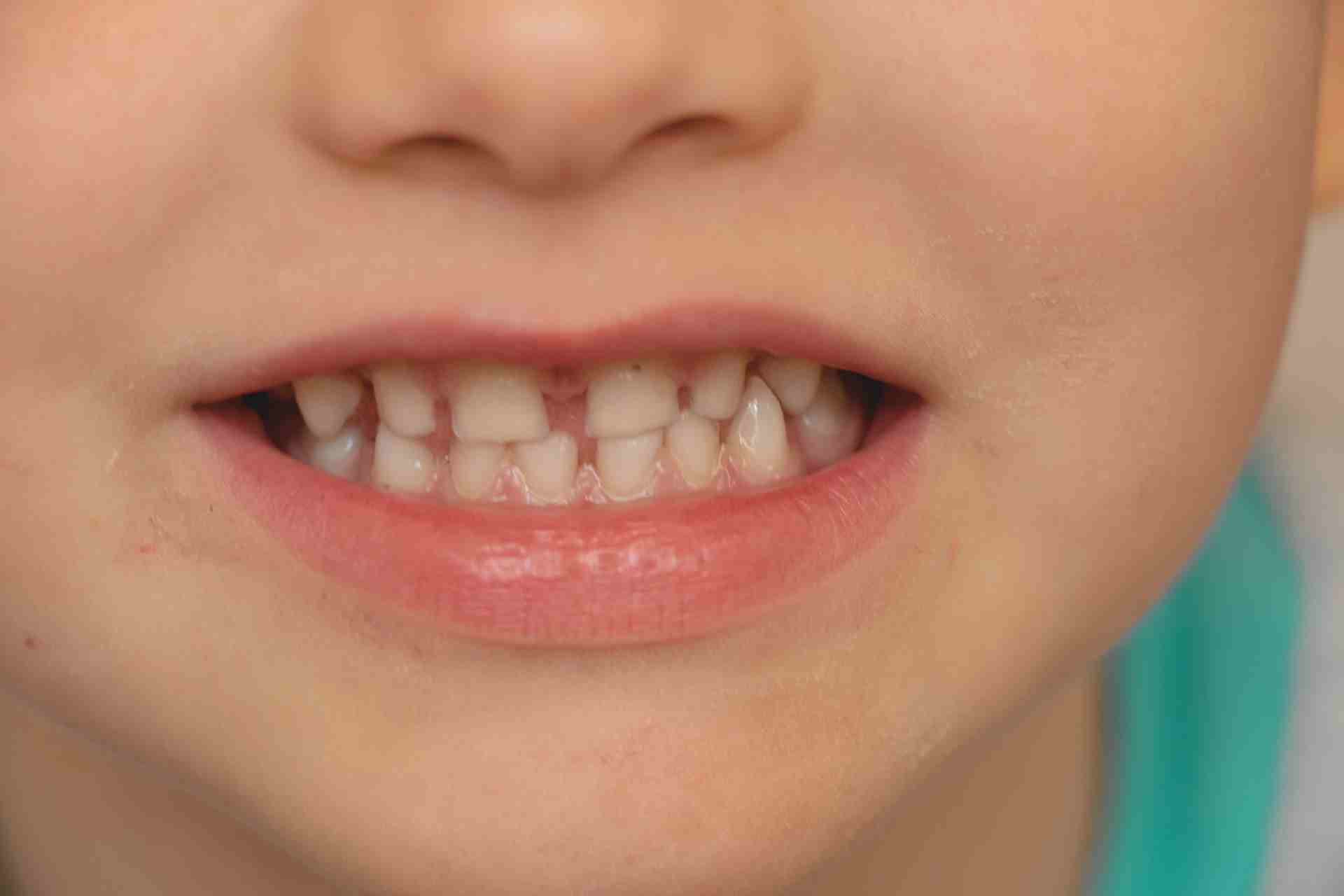Highlights:
- Deciduous teeth guide speech, chewing, and proper jaw development. Baby teeth may be temporary, but they play a crucial role in helping your child learn to eat, talk, and make space for permanent teeth to grow in the right places.
- From the first tooth at 6 months to the last baby molar around age 12, knowing the timeline can ease worries and prepare you for what’s normal and what’s not.
- Good oral habits should start early, even before all the teeth arrive. Brushing, flossing, avoiding sugary snacks, and visiting the dentist by age 1 are simple steps that protect your child’s health and prevent future dental issues.
What Are Deciduous Teeth?

Deciduous teeth, also known as baby teeth or primary teeth, are the first set of teeth children develop, usually beginning around six months of age.
Most children will have a full set of 20 by the time they turn three.
These early teeth may be temporary, but they play a big role. Deciduous teeth help children:
- chew solid food
- learn to speak clearly
- hold space in the jaw for permanent teeth to come in properly later on
Even though baby teeth eventually fall out, they still need daily care. Cavities, infections, or early tooth loss can affect how a child eats, speaks, and even how their adult teeth develop. Think of them as the foundation for a healthy smile that lasts a lifetime.
When Will My Baby’s First Teeth Come In?
Most babies get their first tooth between 6 and 12 months of age. The bottom front teeth are usually the first to appear, followed by the top front teeth, and then the back molars.
By around age 3, your little one will likely have all 20 primary teeth.
As teething begins, you might notice extra drooling, fussiness, swollen gums, or a strong urge to chew on everything. These are all typical signs of teething. Try soothing with a chilled (not frozen) teether, gentle gum massage, or even a clean, cool washcloth.
The American Academy of Pediatric Dentistry recommends scheduling your child’s first dental visit by age 1, or within six months after their first tooth erupts—whichever comes first. This visit helps catch any early concerns and sets the stage for healthy habits.
And as soon as that first tooth pops through, it’s time to start brushing! Here’s a helpful guide to the best toothbrushes for kids based on age, comfort, and ease of use.
When Do Permanent Teeth Start to Come In?

Most children begin losing their baby teeth around age 6, starting with the front teeth. As those baby teeth fall out, permanent teeth gradually take their place, typically finishing up by age 12 or 13, though timing can vary.
The first adult molars, often called “six-year molars,” usually appear at the back of the mouth without replacing any baby teeth. These are important anchor teeth for future dental development.
By the time all permanent teeth (except wisdom teeth) have come in, your child will have 28 adult teeth. Wisdom teeth may appear later in the late teens or early twenties, or not at all.
Want a deeper dive into the full timeline? Here’s a detailed look at when permanent teeth develop and how to support your child’s smile during the transition.
How Are Baby Teeth Different from Adult Teeth?
Baby teeth may look like mini versions of adult teeth, but they have a few key differences that make them unique and a little more vulnerable.
Here’s how they compare:
Size and color: Baby teeth are smaller, whiter, and have thinner enamel than adult teeth. That thinner enamel makes them more prone to cavities, especially if oral care is inconsistent or sugary snacks are common.
Root structure: The roots of baby teeth are designed to dissolve as permanent teeth push through. That’s why they loosen and fall out on their own—no magic needed.
Function: Deciduous teeth act as placeholders for adult teeth. If a baby tooth is lost too early, nearby teeth can shift, which might affect the alignment of the permanent ones.
Even though they’re temporary, baby teeth still need regular care to avoid pain, decay, and future dental issues.
Curious how baby teeth fit into the big picture? Here’s a breakdown of how many teeth humans have from childhood through adulthood.
What Happens If Baby Teeth Don’t Fall Out on Time?
Sometimes baby teeth hang on a little longer than expected—and that’s called retained deciduous teeth. It usually happens when the permanent tooth underneath doesn’t grow in properly or gets delayed.
If a baby tooth doesn’t fall out when it should, it can block or shift the path of the adult tooth trying to come in. This might lead to crowding, crooked teeth, or even the need for orthodontic treatment later on.
While some delays are harmless, a baby tooth sticking around past age 12 or 13 is usually worth checking out. Your child’s dentist can take an X-ray to see if the adult tooth is present and decide whether the baby tooth should stay or be removed.
In rare cases, adults still have one or more baby teeth if no permanent replacement ever developed.
Coming up next: let’s go over a few ways to keep baby teeth healthy from the start.
Tips for Keeping Deciduous Teeth Healthy

Even though baby teeth are temporary, they need just as much TLC as permanent ones. Healthy habits in the early years lay the groundwork for a lifetime of strong, cavity-free smiles.
Here’s how to care for those tiny teeth:
Start brushing as soon as the first tooth appears
As soon as you see that little white bud peeking through the gums, it’s time to start brushing! Use a soft-bristled baby toothbrush and gently clean the tooth twice a day. No need for toothpaste at first—just water is fine until your child is ready for fluoride.
Use fluoride toothpaste in tiny amounts
Once your child is around age 1 (or once they’re able to spit), you can introduce a smear of fluoride toothpaste—about the size of a grain of rice. Around age 3, you can increase it to a pea-sized amount. Fluoride helps strengthen enamel and prevent cavities, even in baby teeth.
Floss once the teeth touch
The moment two teeth are close enough to touch, it’s time to floss! These tight spots can trap food and bacteria, which brushing alone might miss. Daily flossing helps prevent decay between teeth, especially those back molars.
Keep up with dental checkups twice a year
Your child’s first dental visit should happen by their first birthday, but don’t stop there. Regular visits every six months allow your dentist to check for early signs of cavities, monitor tooth development, and give personalized tips for home care.
Avoid frequent sugary snacks and drinks
Sugar is a major culprit behind baby tooth decay. Limit juice, sticky candies, and frequent snacking throughout the day. Offer healthy alternatives like fruit, cheese, or yogurt, and stick to water between meals to keep those teeth squeaky clean.
Bonus Tips:
- Don’t let your baby fall asleep with a bottle, especially one with milk or juice. This can lead to “baby bottle tooth decay.”
- Make brushing fun! Try toothbrushes with lights, songs, or your child’s favorite character.
- Model good behavior. Let your child see you brushing and flossing too.
Key Takeaways
- Deciduous teeth play a major role in your child’s early development, helping with chewing, speaking, and guiding permanent teeth into place.
- Healthy baby teeth set the stage for healthy adult teeth, so don’t skip on brushing, flossing, and checkups just because they’ll fall out.
- Consistency is key—keep up with dental visits, establish strong brushing routines, and monitor teething milestones to support your child’s growing smile.
FAQ: Deciduous Teeth
How many baby teeth do children have?
Most kids will have 20 deciduous teeth by around age 3, with 10 on the top and 10 on the bottom.
What if my child’s baby tooth is loose but won’t fall out?
Give it some time. If the adult tooth is erupting behind or above it, or the baby tooth seems stubborn for months, check in with your pediatric dentist. X-rays can help determine the best next step.
Are cavities in baby teeth really a big deal?
Yes. Cavities in baby teeth can cause pain, lead to infections, and affect the developing adult teeth underneath. They can also create anxiety about dental care later on.
Can baby teeth come in too early or too late?
Timing varies. Some babies get their first tooth at 4 months, others not until 14 months. If no teeth have appeared by 18 months, bring it up with your dentist.
At what age do deciduous teeth fall out?
Most kids start losing baby teeth around age 6. The process usually wraps up by age 12 or 13, though every child’s timeline is a little different.
What is the difference between primary and deciduous teeth?
They’re the same thing. “Deciduous teeth” is the clinical term, while “primary” or “baby teeth” are more common in everyday use. All refer to the first set of teeth that children develop.
Which teeth fall out at age 12?
Typically, the canines and second molars fall out last, usually between ages 10 and 12. These are often the final baby teeth to be replaced by adult ones.
Are deciduous teeth weaker?
Yes. Baby teeth have thinner enamel than adult teeth, making them more vulnerable to cavities. That’s why good brushing and regular checkups are so important from the start.





















